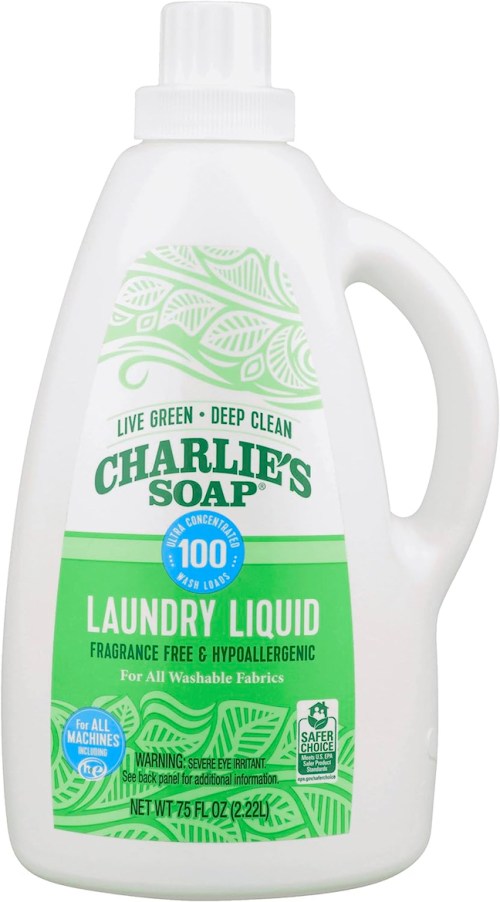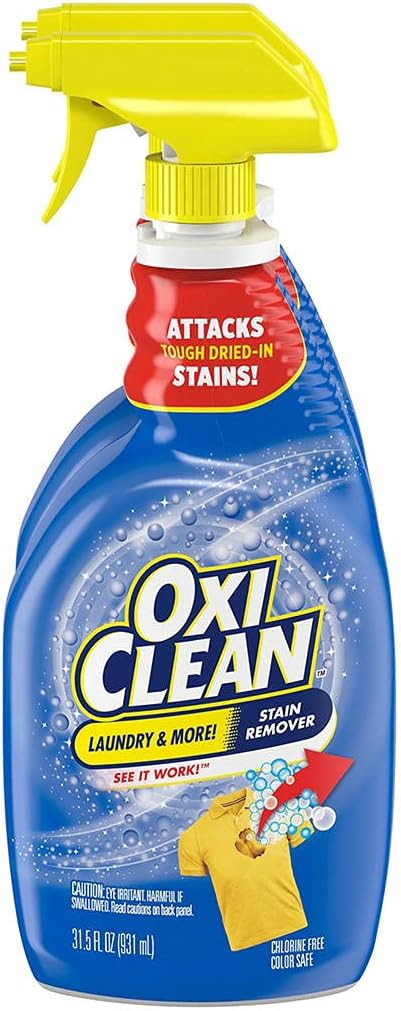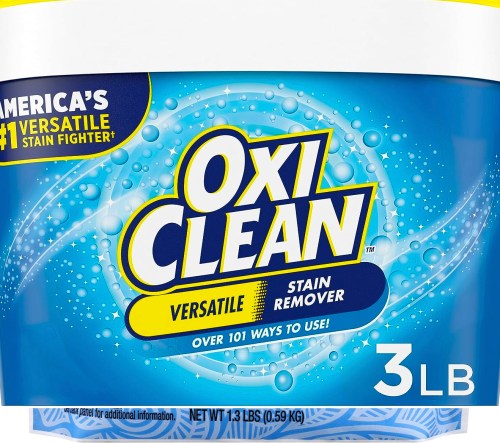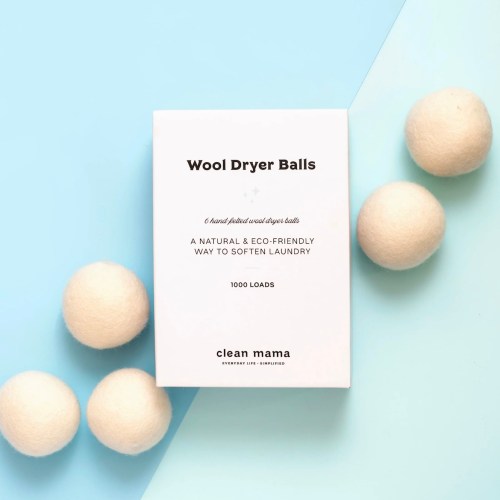Our editors independently select these products. Making a purchase through our links may earn Well+Good a commission
How To Clean Pillows, Keep Them From Yellowing, and Freshen ‘Em Up for Comfier Summer Sleeping
You know to wash your sheets and pillowcases, but you should also clean your pillows. Learn from experts how to clean every kind of pillow.

In the summertime, you’re likely looking for a slightly different (read: cooler) bed experience than you are in the colder months. Part of achieving that is making sure all your bed linens, like your sheets and duvet, are just right to support summer sleeping.
Experts in This Article
cleaning expert and author of Clean Mama’s Guide to a Healthy Home
cleaning expert with more than 30 years of experience and founder of house cleaning consultancy Ask Cindy How
board-certified dermatologist at Audubon Dermatology in New Orleans
But there’s one core piece of your bed tableau that’s likely not getting enough love—your pillows. To be sure, you probably swap out your pillowcases as needed, but how often do you actually clean your pillows? Lumpy, heavy pillows streaked with sweat—or covered with allergen-agitating dust mites—don’t exactly make for a refreshing slumber.
Why you want to clean your pillows
You (ideally) spend lots of time lying on your pillows sleeping, and while you’re catching those zzz’s you’re sweating, producing oil, and shedding skin cells (sloughed off skin cells are a main component of household dust). According to Deirdre Hooper, MD, board-certified dermatologist at Audubon Dermatology in New Orleans, allergy inducing dust mites, the microscopic pests that feed on these dead skin cells, can accumulate in your bedding—and, most notably, your pillows.
Dust mites love humid and moist environments, so introducing moisture into the mix—through sweating, drooling, or even sleeping with wet hair—can create an environment where dust mites and bacteria could thrive. All of this can kick off allergies. “Your pillow can certainly harbor dust mites, and they grow better in warm weather, so a few more are probably building up [in the summer],” says Dr. Hooper. “If you’re having trouble with allergies or sneezing, it certainly could be dust mites you’re breathing in through your pillow.”
“Your pillow can certainly harbor dust mites, and they grow better in warm weather so a few more are probably building up [in the summer].”—dermatologist Deirdre Hooper, MD
It’s a good idea to clean your pillows every three months or so to reduce the accumulation of dust mites and moisture, suggests Dr. Hooper. You don’t need to launder pillows as often as pillowcases, which act as a barrier and should be swapped out weekly.
Refreshing your pillows is a good idea for aesthetic reasons, too. Remember that mention of moisture? If you’re a hot sleeper prone to sweating at night, you may find your pillows streaked with yellow sweat stains; the minerals in your sweat are responsible for the stains. (Dr. Hooper says there’s no danger leaving them there, but certainly, for aesthetic reasons, you may want to remove them.)
How to clean every type of pillow
The best way to clean your pillow depends on its material. Using your washer and dryer is the path of least resistance toward clean pillows, and works for pillows filled with down feathers or synthetic fibers. Before you do anything, be sure to read and follow any care tags on your pillows, which give specific instructions for how to clean them.
In general, Becky Rapinchuk, cleaning expert and author of Clean Mama’s Guide to a Healthy Home, says many pillows, such as down, synthetic, or down-alternative, are fine in the washer and dryer. However, down pillows may require “a little extra care” to keep the feathers fluffy and to hold their shape. The one type of pillow you should always plan to hand clean? “If you have a latex or foam pillow you don’t want to put it in the wash because it will melt and disintegrate, especially if you put it in the dryer,” says Rapinchuck. Here’s a breakdown of how to clean different pillow filling types:
Feather, down, or down-alternative pillows
1. Pre-treat stains
Pre-treating stains, like yellow sweat marks, drool, or blood, helps them lift more easily, whether you’re cleaning your pillow by hand or in a washing machine. Rapinchuk recommends using a concentrated laundry spray or an oxygen cleaner to attack all sorts of pesky stains. “It has sodium percarbonate in it, which is dried hydrogen peroxide, and it gives a bit of that bleaching action you want without using actual bleach,” she says.
2. Balance the pillows in your machine
Pillows are absorbent, so you don’t want to use more water than necessary when you clean them. If you’re able to adjust the load settings on your washing machine, Rapinchuk recommends using enough water so the pillows are saturated and covered, but not enough so the whole drum is full. Pillows are absorbent, so too much water will mean a much longer cleaning time, and probably a couple extra spin cycles to wring out all that extra water.
Stick to washing two or three pillows at a time to avoid overfilling your washing machine. This way, each pillow will be touched. “You want to make sure that water is free flowing and doing a good job,” she says. If your pillows are still dripping wet at the end of the cycle, Rapinchuk recommends running an extra spin cycle.
3. If you’re handwashing, fill a basin
Cindy Inman, founder of Ask Cindy How and a cleaning expert with more than 35 years of experience, likes to use a basin in her laundry room to wash her pillows. After pretreating your pillows for stains, soak the pillows in a basin of warm water for 20 minutes, then carefully wring out as much water as possible. You can either finish the job in your washer and dryer, hang them on a clothesline, or lay them flat on a clean towel to dry.
Memory foam, gel, or latex pillows
Many foam pillows come with protective coverings that are machine washable; if yours has this, Rapinchuk and Inman recommend removing this case and laundering it according to the care tag’s instructions.
After treating any stains, use a soft cleaning cloth and a small amount of soapy water to gently clean the whole pillow. “You’re not soaking it, you’re just going on the surface,” says Inman. Let the pillow air dry, and don’t put your case back on until you’re sure the whole pillow is completely dry.
The best laundry products to use to clean your pillows

Charlie's Soap, Laundry Liquid — $21.00
Inman is a fan of Charlie’s Soap’s entire line, and regularly recommends its products to her customers. This is her preferred liquid detergent to clean pillows, whether in the washing machine or by hand.

OxiClean, Laundry Stain Remover Spray — $6.00
Inman likes this premixed, sprayable version of OxiClean, a powerful enzyme stain remover, to treat any marks like sweat stains on pillows. Let the solution sit on the pillow to penetrate the stain. The spray bottle’s nozzle makes spot cleaning quicker and less messy than mixing a powder version with water. “It rinses out well without leaving any residue,” she adds.

Clean Mama, Laundry Detergent Spray & Pre-Treater — $18.00
If her pillows have visible stains, Rapinchuk likes to use this concentrated stain treatment from her Clean Mama line. She sprays the stain and lets it soak in before she tosses her pillows in the washer.

Clean Mama, Natural Oxygen Whitener and Stain Remover — $18.00
Beyond targeting specific stains and marks on her pillows, Rapinchuk likes to add two or three scoops of this oxygenated bleach alternative powder to the washing machine to keep her pillows white.

OxiClean, Versatile Stain Remover Powder — $9.00
Originally $11, now $9
Inman swears by OxiClean’s powder bleach alternative to keep pillows clean and white in the washing machine. Follow the package directions and add the powder to help eliminate any gross yellow sweat stains.

Gerber, Unisex Prefold Cloth Diapers — $14.00
Yes, these are cloth, 100 percent cotton baby diapers—but Inman says these make the best cleaning cloths. Here’s her justification: “It’s soft so it doesn’t tear into the fabric’s fibers, and you can see dirt, which means you can see what you’re accomplishing,” she says. “I’m very specific about this because we don’t want to use just any type of cloth to wipe up.”
ThirdLove Just Launched Bras That Help Balance Your Body Temperature—Here’s Why That’s a Game-Changer for Women in All Life Stages

These Are the Only Types of Underwear You Should Be Wearing, According to Gynecologists

These Are the Summer Essentials You Should Bring With You Every Time You Leave the House, According to a Derm and an RD


Clean Mama, Wool Dryer Balls — $18.00
This set of six soft wool balls helps fluff and soften pillows as they spin around your dryer.
How to dry your pillows
Use dryer balls or tennis balls: Once your pillows are ready for the dryer, Rapinchuk recommends tossing in some wool dryer balls to fluff the pillows and keep them moving in the machine. “It will help to return those fibers to their natural fluffy state,” she says. A clean tennis ball works too, though Rapinchuk notes these can be loud and there’s a chance the green or yellow dye could transfer, depending on the type of ball you use. To avoid any dye transfer from tennis balls, put them in a white sock and tie them off.
Stick to low or medium heat: No matter what type of pillow you’re washing, Rapinchuk says blasting them with the highest dryer temperature isn’t necessary to clean them sufficiently and can in fact damage your pillow. Stick to low or medium heat to keep the integrity of the filling intact.
Flip the pillows: Keep an eye on what’s happening in the dryer to make sure each pillow holds its shape and is actually drying. Rapinchuk recommends periodically opening the dryer door to make sure the pillows are circulating and not losing their shape; if you’re wondering how to wash a feather pillow without clumping, for example, and notice that all the feathers are bunched at one end, take it out and redistribute them before tossing it back in.
Use the sun: If it’s a dry, sunny day, you can also place your pillows outside to dry. Lay out a towel on a flat, clean surface and let them air dry; when one side feels dry, flip it over and do the other. “The sun is going to help bleach out any residual stains, and assuming it’s warm it’ll make sure everything is dry on the inside,” says Rapinchuk. Don’t do this if you can’t find a clean spot to put your pillows or if it’s humid.
How to refresh your pillows without washing them
Sometimes you need a bit of a refresh but don’t have time to undergo a full cleaning process. Rapinchuk recommends turning to your bar cart for help in this case: “Give it a nice spritz with plain vodka or isopropyl alcohol,” she says. Fill a small spray bottle with a couple of tablespoons of vodka or isopropyl alcohol and mist your pillows lightly (don’t soak them).
“You can put [the pillow] in the dryer and fluff it up on a warm setting, which will help with germs, too.”—cleaning expert Becky Rapinchuk
When the vodka has dried, either lay your pillow out to dry in the sun or toss it in the dryer for a spell. “You can put it in the dryer and fluff it up on a warm setting, which will help with the germs, too,” she adds. She recommends employing this trick when you just need a quick clean, or just after you’re recovering from a cold or other illness but you’re not quite ready to do your full post-sick-day cleaning kick.
How to protect your pillows from yellowing and wear and tear
The best way to keep your pillows pristine and cut down on cleaning time, both Rapinchuk and Inman say, is to invest in a pillow protector. This way, you’re creating yet another layer for any moisture and mites to penetrate.
These work exactly how your mattress protector works; the protective sleeve zips shut and goes directly on your pillow (underneath your pillowcase) to provide an extra buffer against sweat, drool, and more. You can wash these just as you would your pillowcase, too; Rapinchuk washes hers every other week and tosses it right into the washer and dryer with her other bedding.
Inman says the first thing she does whenever she buys a new pillow is encase it in a cotton, hypoallergenic pillow protector. This way, she doesn’t have to worry about washing her bare pillows often. “What is really a pain is targeting specific spots, and worrying about it drying properly, so [this way] all I have to do is take that pillow cover off and wash it,” she says.
For folks prone to allergies especially, Dr. Hooper recommends purchasing dust mite covers for pillows. Encasements with tightly woven fibers may be helpful to reduce dust mites, and cooling or hypoallergenic bedding could help reduce the moisture they need to thrive.
How to know when to change your pillow
Rapinchuk has a helpful test to know when it’s time to bid your pillow adieu: Holding the pillow from one of the short ends, bend it in half. If it bounces back, the structure is still springy and cushioned enough to provide support. If it stays bent and feels heavy or lumpy, it’s probably time to replace it. “When you don’t have a little bit of a bounce back, it’s probably seen better days,” she says.
If you really don’t want to toss your pillow, you can repurpose it as a decorative pillow that you don’t necessarily sleep on. Rapinchuk recycles her older pillows into pillow sham inserts, which are decorative pieces that sit atop a bed.
Sign up for the Well+Good SHOP Newsletter
Get exclusive deals on wellness, beauty, fitness, and food products that have been hand-picked by our editors.
Got it, you've been added to our email list.







